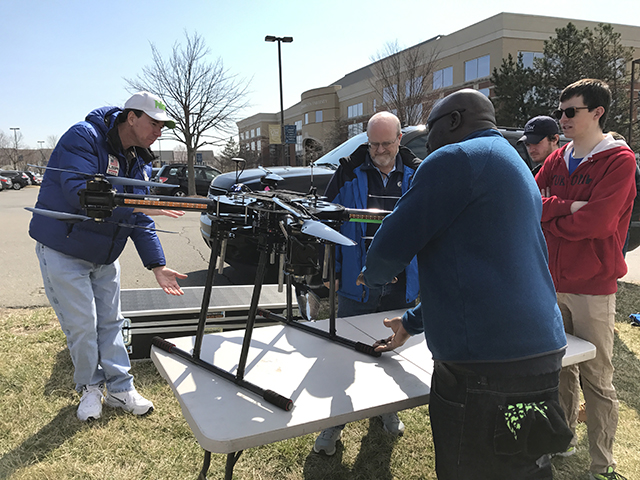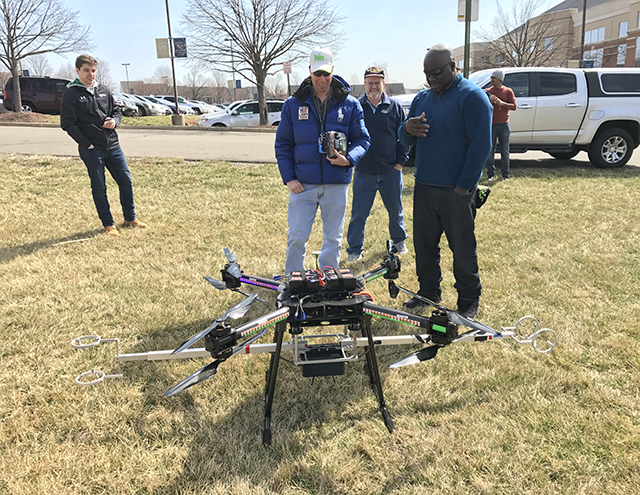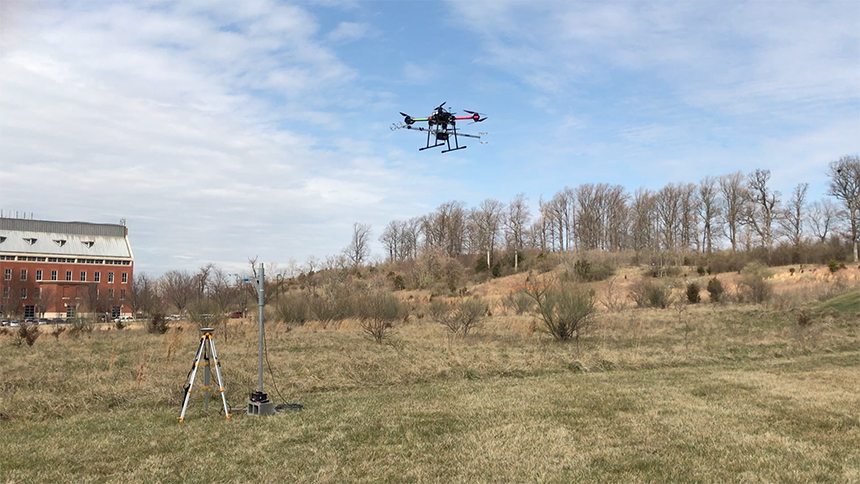On a windy spring morning there was excitement in the air as a group of six GW faculty and students gathered at GW’s Virginia Science & Technology Campus (VSTC) to conduct a flight test of a “drone,” technically called an unmanned aerial system (UAS), under development for use by the U.S. Navy.
“Landing helicopters on Navy ships can be very challenging, particularly in inclement weather. The Navy is looking for more precise wind information to help guide decisions about when and under what conditions it is safe to land helicopters on Naval ships,” said Dr. Murray Snyder, principal investigator of the project, professor of mechanical and aerospace engineering for GW’s School of Engineering and Applied Science (SEAS) and a retired U.S. Navy Captain. “We are developing a UAS to collect the data they need.”
The trial flight at VSTC is part of a multi-year development process to test the prototype’s ability to fly and collect accurate data. A loud sound like a lawnmower filled the air as the “remote pilot” used a controller to lift the large, 8-rotor UAS, known as an octocopter, off the ground and gain altitude.

Dr. Murray Snyder,Principal Investigator, second from left, discussing the UAS with a team of students and contractors.
The UAS, measuring a width of seven feet and weighing 45 pounds with its payload, was outfitted with test equipment, including a black data box and ultrasonic anemometers, in order to collect information on wind speed, orientation of the UAS and location via GPS. The equipment was temporarily suspended under the UAS using a horizontal beam to keep the data collection points away from the UAS’s rotor downwash.

The UAS is shown here with the payload of test equipment, including the black data box and ultrasonic anemometers.
The group also used a “base station” on the ground to collect wind data and GPS position to help validate data. The team used the flight tests to adjust settings on the prototype and computer system, and collaborated on innovative ways to address concerns like reducing vibration, managing battery capacity and fully waterproofing the equipment for water landings.
More testing will be required before GW’s unique prototype is complete and in use by the U.S. Navy, but this project is a creative example of how a UAS can be used to improve safety and decision making.


